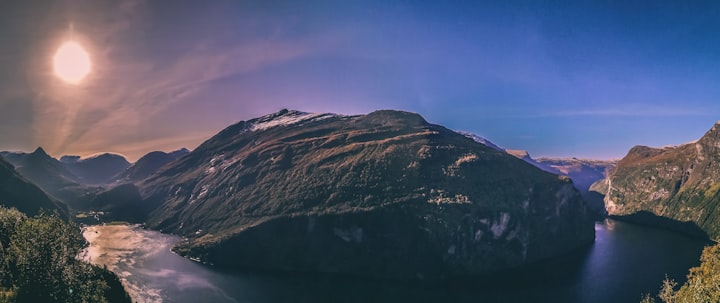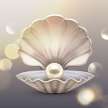The Nature of the Cosmos
The Norse Origin Myth & Norse Culture

Very few cultures have the Norse perspective of cosmogony (a view on the origins of the cosmos).
The Norse cosmogony enlightens a culture aimed on orderly civilization protected from the anarchic outside, a perpetual cycle of creation, and the gods settings an archetype for which the warriors efforts were patterned. From the constant give-and-take involved in creating life to the high value placed on honor and competitive accomplishments, the Norse have evolved their view on the cosmos based on their grand narratives that give meaning and sense to the world that is much more timeless and universal than other religious cultures. Before the Norse were converted to Christianity, they thrived with their own highly sophisticated and intricate religious customs. As they were forced to convert to Christianity, many of their texts and myths were burned to ensure their conversion. Even with such events, a plentiful amount of medieval texts were left untouched in Iceland; this is where most of our knowledge of the Norse religion stems abundantly from. The Norse peoples wrote myths involving the creation of the universe being ongoing and participatory, the consequences earned for winning a noble battle, and the importance of helping the Gods defeat the giants even though they are aware of their preordained defeat. In the Norse creation myth, we see the sacredness of their beliefs and continuous acts in keeping the cosmos perpetual through every exploit and action made.
Reality is constantly shaped and changed by all living beings and events within the Norse creation. The creation of the cosmos occurs within the gaping abyss of Ginnungagap; the representation of initial chaos. Fire ridden Muspelheim is to the north of Ginnungagap, while icy Niflheim is to the south of the immense trench. The water droplets produced by the merging of the two created the first godlike giant, Ymir. Ymir was a hermaphrodite and could reproduce asexually when he sweated in his sleep. This created the first family of giants. As the frost continued to melt, a cow named Audhumla, emerged to nourish Ymir and his family while she licked an ice block; as she continued to lick, the first god of Aesir sprung from the ice named Buri. Buri had a son named Borr, who married Bestla (a giant). Borr and Bestla had 3 sons, Odin, Ve, and Vili. Odin and his brothers didn’t like being out numbered by the giants; Ymir was constantly conceiving more. Thus, Odin and his brothers set out to kill Ymir. When Ymir was slain, his blood ran in furious forces, killing most giants because they drowned in the flood.
Only two giants survived; Bergelmir and his wife fled and found safety in the lands of mist. All future giants descended from this couple. The brothers Odin, Ve, and Vili thus began constructing the world from Ymirs’ flesh. Then, the gods formed the first man and women, named Ask and Embla, from two tree trunks. The gods proceeded to build them a fence around Midgard, one of the nine-dwelling worlds, to protect the feeble humans from the giants. The Norse knew that the world one day would end as we know it, they call this day Ragnarok. Ragnarok is the doom of the gods and the humans. It will be the final battle between the Aesir and giants. The giants will consume and destroy everything around them. The world will then sink back into Ginnungagap, to resume the perfect darkness and silence. This time of death did not last long, the world soon raised again.
The Norse people use fences to represent the orderly, civilized minds within the fence (called Innangard), while those and that which is outside of the fence, represent the chaotic, wild minds and actions (called Utangard). In the Norse creation myth, Odin, Ve, and Vili built a fence around Midgard to protect the humans from the giants. The fences that enclosed farms had a cosmological purpose that was inseparable from their more immediate, practical purpose. These fences were not only to ensure their livestock does not stray, but also to keep trolls, giants, and other hostile inhabitants of the wilderness out. Fences marked a boundary between two different states of being; they were the boundary between innangard and utangard.
One concept vital to understanding the culture of the Norse people within the Norse creation myth is that creation is ongoing and participatory. During Ragnarok, the doom of the gods and humans, the giants began devouring all humans, gods, and soil. However, as the giants slashed at all within the world, they would soon die after each leveled a portion of land and beings; the Aesir gods and humans avenged many of their fallen gods and brothers with every death of a giant. When the giants succeeded in eating and destroying most of the world and that which inhabited it, in the ultimate reversal of the original process of creation, the devastated land sank back into the perfect silence and darkness of Ginnungagap itself. Not long after, the gods soon return to resume their molding of the wolrds. A new human pair, Lif and Lifthrasir, the equivalents of Ask and Embla in the Norse creation myth, awaken in the new green land. What Ragnarok describes (giants eating/destroying world; world sinking back into Ginnungagap; world raised again; new human pair; the gods returned and resumed) is a cyclical end of the world. However, that end is followed by a new creation, which in turn will be followed by another Ragnarok, and so on throughout eternity. Time, as well as creation, are cyclical, rather than linear. The Norse people were inspired by this to help their gods in never giving up and dying nobly in battle against the giants. Each sacrifice or courageous act in defiance to the giants is reshaping the cosmos, for the trajectory of Norse mythology is cyclical.
New life feeds on death, a principle which can be viewed everytime we eat. To create the world, Odin and his brothers had to first slay Ymir. The gods then proceeded to construct the lands and sky with the warm flesh of Ymirs’ corpse. Ymirs’ blood became the ocean, while his skin the land. Ymir and the giants came into being when Muspelheim and Niflheim merged into one, they are essentially an extension of Ginnungagap itself. After all, Ymir’s kin, the giants, are constantly attempting to drag the cosmos back toward the chaotic nothingness of Ginnungagap, which, during Ragnarok, they succeed. Whenever the Norse people ate, cleared land for settlements, built settlements, or engaged in battle, they can look back at the tale of the gods slaying Ymir as the archetype upon which their own efforts were patterned.
Within these noteworthy instances, it is evident to see how the Norse cosmogony illuminates a culture whose properties are much different than most cultures. From the orderly, civilized minds protected from the chaotic outside, to a perpetual cycle of creation and time, to the gods setting an archetype for which the Norses’ efforts were shaped, one will find that the Norse people lived in a tradition different entirely from other cultures based off the Norse creation myth. The view on the origin of the cosmos from the perspective of the Norse people is explained and understood more rationally and completely, rather than the idea of the creation of the universe happening at one initial time and never happens again, because of the cyclical creation and destruction of the nine worlds present in the Norse creation myth.
About the Creator
Beige Shell Writings
Just pieces from my brain and some short stories! Hope you enjoy 😊






Comments
There are no comments for this story
Be the first to respond and start the conversation.